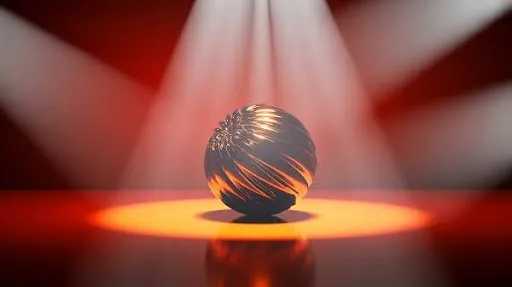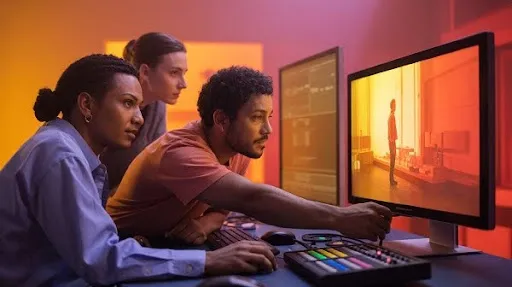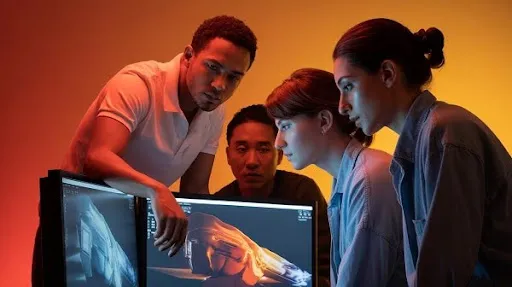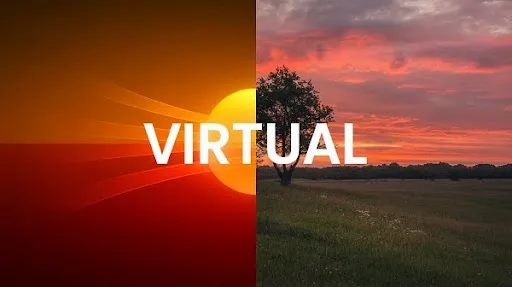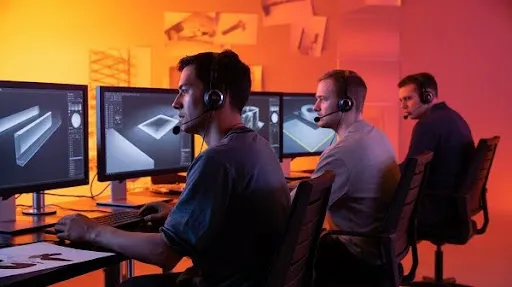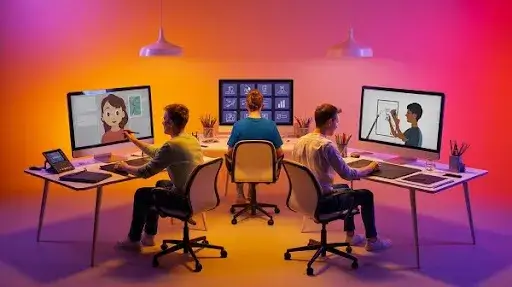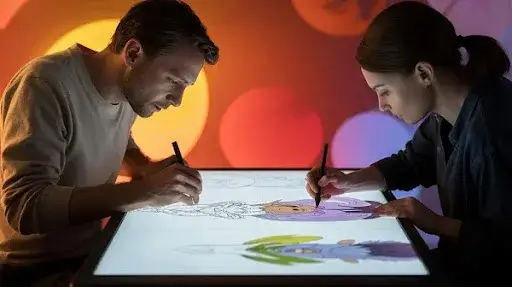Every great 3D animation has one invisible hero: light. Before the camera pans, before the model even breathes, we’ve already asked the lighting what mood we’re supposed to feel.
Anyone who’s spent time behind a lens knows the weight that torch of light carries. It colours, defines, and forges the very pulse of the frame. Animation works the same way.
Strong lighting in a 3D scene is the heartbeat that distinguishes a sterile model from a living creature. Set the same mesh in one illumination and it wilts; shift it to another, breathe in a fresher beam, and it erupts with life.
Light coaxes contours out of polygon soup, forges memory, and ushers the gaze. No map, no bump, and texture crafted by sorcery can outrun ill-designed illumination. Melted detail becomes a barren land the moment the lamp lies flat.
Lighting isn’t a final touch. It’s storytelling. It highlights emotion, defines shape, and creates atmosphere.
This guide clarifies what 3D lighting is, when it arrives in the animation pipeline, which light source families it can choose from, and what the toolkit of mainstream techniques is in a synthetic animation landscape.
What Is 3D Lighting?
3D lighting is the process of simulating light inside a computer-generated scene. Using software, artists control direction, intensity, and color. They can recreate natural sunlight, neon signs, or a dim candle glow.
The lighting stage of the 3D animation pipeline follows modeling, rigging, and texturing. All geometry sleeps as idle grey clay, bones rest unsent, and mapped detail is a brittle illusion. Only a flash and flicker can wake them. A small adjustment in angle or tone can change how a scene reads — playful, mysterious, or tense.
This is where lighting in 3D animation moves beyond being technical. It becomes part art, part science.
Fact: The worldwide 3D animation industry was valued at USD 22.67 billion in 2023 and is expected to attain USD 51.03 billion by 2030, with a strong CAGR of 12.3%
Why Lighting Fundamentals for 3D Animation Matter
Lighting fundamentals are the backbone of visual storytelling. Here’s what they bring to the table:
- Mood and tone – Bright setups suggest joy or clarity. Dark, moody lighting creates drama or tension.
- Focus – Light points the viewer where you want them to look.
- Believability – Shadows, reflections, and highlights make a digital world feel grounded.
- Consistency – Projects with dozens of shots look cohesive when lighting ties them together.
In 3D animation services, lighting can be the make-or-break factor. For product lighting or architectural visualization, strong fundamentals ensure details are presented clearly and persuasively.
The Lighting Stage of the 3D Animation Pipeline
The lighting stage is close to the finish line. Models are built. Textures are painted. Animations are ready. Lighting steps in to shape the final look before rendering.
Artists decide where the main light should sit, how shadows fall, and how much ambient glow fills the space. A building walkthrough may need daylight accuracy. A product demo may need sleek, controlled highlights. A story-driven animation may require a moody spotlight to push emotion.
This stage is about finding the right mix of technical accuracy and artistic vision. The same shot can change completely depending on how it’s lit.
Different Types of 3D Lighting
The basics of lighting in 3D environments start with four primary types of sources. They act as the foundation for any setup.
Directional Light
Works like the sun. Rays are parallel and consistent across the scene, perfect for outdoor setups.
Point Light
Radiates from one spot in all directions, like a light bulb. Handy for filling gaps or small highlights.
Area Light
Casts light from a surface, such as a window or panel. Creates softer shadows and is often used in product lighting or architectural visualization.
Spotlight
Casts a focused cone with soft falloff around the edges. Useful for emphasizing characters or specific objects, similar to theater lighting.
With these options, artists can replicate almost any real-world source inside a virtual environment.
Core 3D Lighting Techniques
The light types are just the tools. Technique decides how they’re used.
Global Illumination (GI)
Adds realism by simulating bounced light. Instead of harsh direct rays, GI shows how light reflects off walls and objects. The result is natural softness.
Skydome Lighting
Surrounds a scene with a glowing dome, often mapped with HDR images. This creates ambient light and realistic reflections. It’s a go-to for outdoor animation, but it works indoors too when natural light is needed.
Lighting Techniques in a 3D Environment
Traditional photography still influences modern animation. The most common lighting setups in a 3D environment mirror studio photography.
Three-Point Lighting
Classic and versatile. It uses:
- A key light for the main source.
- A fill light to soften shadows.
- A rim light behind the subject to separate it from the background.
Great for characters, interviews, or products.
Two-Point Lighting
Simpler. A primary light combined with ambient or reflected light. Works well for natural daylight scenes.
One-Point Lighting
Minimalist and dramatic. A single source throws a strong contrast and deep shadows. Common in suspense or horror sequences.
These aren’t rigid rules. They’re starting points artists tweak depending on mood, story, or brand needs.
The Role of a 3D Lighting Artist
Lighting artists are both technicians and storytellers. They know how materials react under different lights:
- Metal reflects sharply.
- Fabric scatters softly.
- Glass bends and distorts.
They also understand emotional impact. Golden tones feel inviting. Cold blues can feel distant or eerie.
In larger studios, entire teams specialize in this stage to ensure consistency across projects. At Prolific Studio, lighting experts are key to delivering animations that look polished and professional.
Advanced Lighting Fundamentals for 3D Animation
Once the rules hum comfortably, we step into the realm that yanks a render past “satisfactory” into “stand-at-the-frame-arguing-how-anyone-s-sense-is-unchallenged.” Proven methods for 3D lighting unlock the artistry for mood sculpted at a level that live cameras break into applause—because, in the right hands, the difference vanishes.
Image-Based Lighting (IBL)
One of the easiest tricks for dialing up realism is to let HDR images be the primary light. Sky, street, or dome HDR—wrap one around the scene, and the reflections, ambient, and key direction follow gel without the tedium of deploying fifty freakish point lights.
It’s a common choice for product lighting or architectural visualization because it grounds objects in something that feels like a real space.
Volumetric Lighting
Think of light beams cutting through dust, fog, or smoke in a dark room. That’s volumetric lighting. It’s not just pretty—it gives depth to an otherwise flat-looking environment. Game cutscenes, horror shots, and cinematic sequences lean on this heavily to create atmosphere.
Caustics
When you spot rippling patterns on a pool’s floor or bands of light winding through a glass, you’re looking at caustics. Trying to replicate those ripples in 3D makes glass, crystal, or water feel crafted instead of computed. It’s tricky and resource-hungry, but when used in moderation, it can take a render from basic to jaw-dropping.
Subsurface Scattering (SSS)
Skin that looks like shiny plastic is an instant giveaway that you’re looking at CGI. That’s where subsurface scattering steps in. It simulates the way light penetrates surfaces like skin, wax, or marble before scattering back out. The result? Human characters that actually feel alive, instead of looking like mannequins.
These methods are a mix of science and artistry. They usually demand more rendering power, but the payoff is huge—especially for projects that aim for cinematic polish.
Lighting in a Virtual Environment vs. Real Life
Lighting in a 3D environment borrows from real-world physics, but here’s the twist: you’re not stuck with nature’s rules. You can move the sun, erase a shadow instantly, or give a single lamp an impossible glow. This flexibility is what makes lighting in a virtual environment so valuable.
Take storytelling, for example. You can spot a key light on a character and know it’s comfort with the impossible. The reference isn’t the daylight— it’s the emotional score.
In product work, the same trick applies to soft shadows or their absence, so the surface holds center stage without friction. That balance of accuracy and freedom is what makes mastering lighting fundamentals for 3D so important.
Hurdles in the Lighting Stage of the 3D Animation Pipeline
The lighting stage of the 3D animation pipeline may be one of the most rewarding steps, but it’s also one of the trickiest. A few pain points most lighting artists run into:
- Keeping things consistent: On long projects, lighting has to stay uniform across multiple scenes. Any mismatch sticks out fast.
- Render times: Chemistry looks fantastic when you crank up volumetrics, bake in global illumination, and run caustics through glass for extra flair, but the render time queues something fierce. Deadlines want to plot, so the compromise will always be there.
- Software quirks: Not all rendering engines treat light the same way. What looks perfect in Arnold may shift slightly in Redshift or Blender’s Cycles.
- Balancing story and physics: Sometimes the “real” way light should behave doesn’t fit the creative direction. A lighting artist has to know when accuracy matters and when bending rules works better.
A seasoned artist learns to manage these issues through experience and teamwork. It’s not just about technical fixes—it’s about knowing when to compromise.
Lighting for Different Animation Needs
Lighting strategies aren’t universal. They shift depending on the goal of the animation.
Product Lighting or Architectural Visualization
Here, the aim is precision. A glass perfume bottle needs crisp reflections. A living room render needs soft daylight spilling through windows. In these cases, lighting isn’t about mood—it’s about clarity and appeal.
Entertainment Animation
Feature and episodic work define the map. Lighting not only delivers exposition, it arranges the emotional index. A soft, sunrise gradient can land a note of cautious optimism, while a dim overhead swing reinforces solitude so neatly you hear the character’s heartbeat in the dark.
Commercials and Explainers
In both 3D and 2D animation, expressive clarity holds the crown. Every frame must gleam with intent without fading into ornamentation. Heavy, deadened shadows can hijack urgency, yanking the viewer away from the narrative heartbeat. Neat, harmonised light schemes now rule the realm.
Each type of project asks for a different balance of artistry and practicality.
Collaboration in the Lighting Stage
Lighting isn’t a solo job. Every adjustment a lighting artist makes depends on work from modelers, texture artists, and animators. A shader that passes muster in one scene might shrivel under a slight angle change.
Artists often lean on sudden reveals—a tight key, a moving slice of sunlight—to choreograph a character’s unguarded breath. Misalignment here can mute that confession.
That’s why studios like Prolific Studio, one of the best animation studios in Austin, deploy entire squads exclusively to light. Colourists, look-dev artists, and shader techs synchronize, journaling lamp settings and reel swaps to guard consistency each frame. Waves of data and fixed schedules mean the animation and asset crews pore through the same streamlined decisions.
Core Skills Every 3D Lighting Artist Should Have
Success in lighting for 3D animation isn’t just about clicking around in software. It takes a blend of technical understanding and artistic judgment. Some essentials:
- Comfort with tools like Blender, Maya, or Cinema 4D.
- A working knowledge of how light behaves in the real world.
- A sense of artistry to decide what looks cinematic or emotional.
- Strong grasp of color theory, from warm vs. cool tones to complementary contrasts.
- Problem-solving skills for when render times explode or shots don’t look consistent.
The best artists are storytellers first. They’re not just “turning on lights”—they’re guiding the way audiences feel about every scene.
Simple, Practical Tips for Better 3D Lighting
Even with advanced tools, the basics go a long way. A few habits can instantly improve results:
- Use reference photos or film stills to guide setups.
- Don’t rely on a single light—depth comes from layering sources.
- Soft shadows almost always feel more natural than hard ones.
- Play with contrast, but don’t let highlights and dark spots fight for attention.
- Keep render budgets in mind—some of the best shots come from smart setups, not heavy simulations.
Sometimes, a small tweak in intensity or angle makes a bigger difference than throwing more tech at the scene.
Frequently Asked Questions
What are the most common lighting techniques in a 3D environment?
The first toolbox sits with one, two, and three-point lighting. Each variant reshapes the emotional landscape, from dramatic mystery to intimate confession, while always steering the viewer toward the story’s pulse.
How is lighting used in 2D video animation services?
Instead of real physics, lighting in 2D animation services is usually implied with shading, gradients, or drawn effects.
Does lighting change the way textures look?
Absolutely. A great texture can look flat if poorly lit, while good lighting can make a simple texture shine.
Do all studios rely on the same software?
Not really. Some prefer Blender, others stick with Maya or Houdini. The fundamentals stay the same across platforms.
Can you build a career by focusing on lighting alone?
Yes. Many professionals specialize in lighting for 3D animation, and it’s a role in demand at most production studios.
Final Word
Ultimately, light is not garnish. It is oxygen, coursing through every polygon, every pixel. Mastery nestles in balancing microscopic realism with the narrative’s throb, every lamp a tiny heartbeat.
That foundational belief iterates through Prolific Studio’s pipeline. Whether a sixty-second ad or a breathin and pulse-worthy architectural tour, light is not labelled a step, it is the step. It’s why our animations don’t radiate—they breathe luminescent, deliberate, animating understatement.
If you want animations that feel polished, clear, and emotionally powerful, our team can make it happen. Reach out today, and let’s talk about how great lighting can transform your next project.
Related articles:

